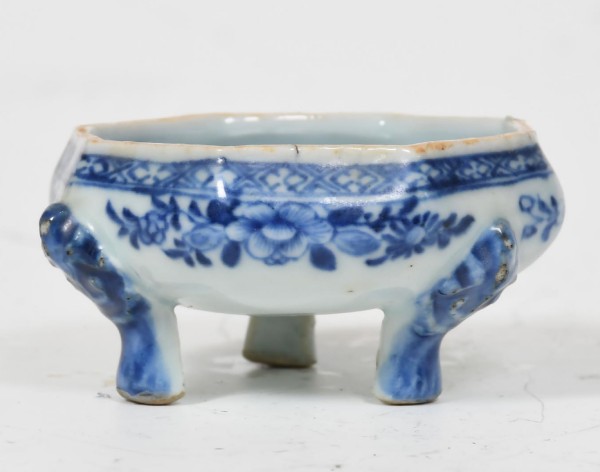
This page is only one of many thousands of Gotheborg.com Help and Information Pages, offering specialized knowledge on Chinese and Japanese Porcelain, including a Glossary, Q&A, Chinese and Japanese Porcelain Marks, Chinese Porcelain Exhibition and Excavation reports etc. For personal help and far more information, join our Discussion Board or use 'Ask a Question' for quick email consultations. For full text and better navigation, use a full-screen device rather than a mobile phone, that offers only limited content.

Unusual salt on three legs, Qianlong period 1736-95
Salts were just small serving dishes on a low foot, rarely on small legs, made to offer some extra salt to the dinner guests. They were made as parts of the large western dinner sets that were ordered from China from the mid 18th century. What makes them rare, is that it seems like a dinner set of several hundred pieces only had just a few salts to the entire set.
Since the almost only way there were to preserve food at that time, in the general mind salty food was the same as "healthy". In some literary sources it has been described that guests have refused fresh food, that had not been salted assuming it was somehow spoiled or unhealthy.
It was therefore a general suspicion against fresh food, which probably could be overcome by adding some extra salt to even the best possibly fresh food.
At the same time salt was a necessity and very expensive, which could explain the small number as well as the fact that their well sometimes were not be large enough to hold more than a few grains of salt.
Jan-Erik Nilsson